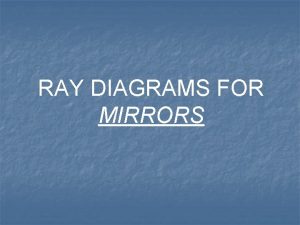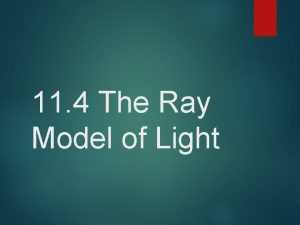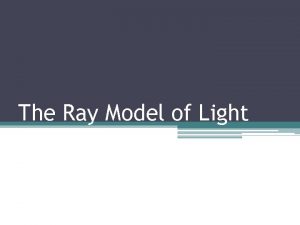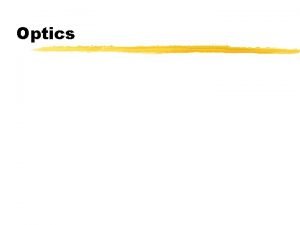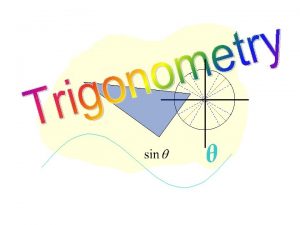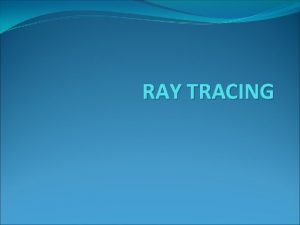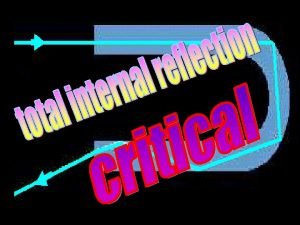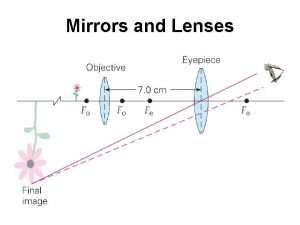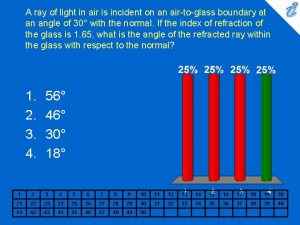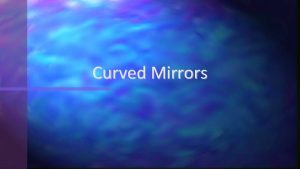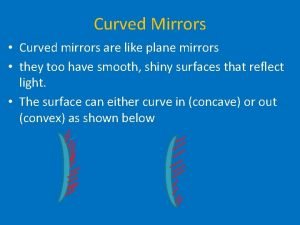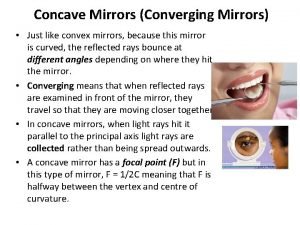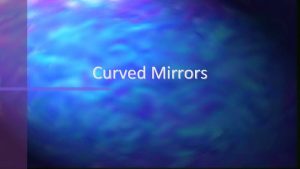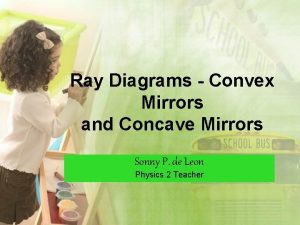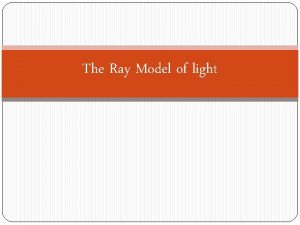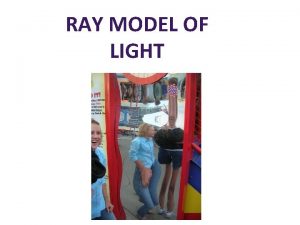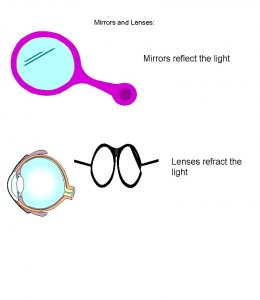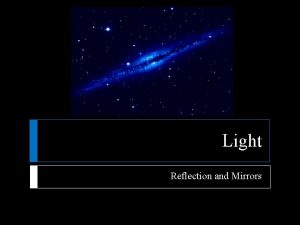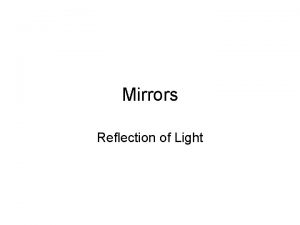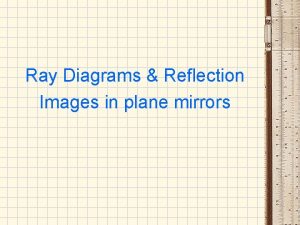Chapter 5 The Ray Model of Light Mirrors
















- Slides: 16

Chapter 5 ~ The Ray Model of Light, Mirrors, & Lenses Lesson 5. 1 ~ The Ray Model of Light

DESCRIBING LIGHT v Wave Model (chapter 4) – light travels as a wave v Particle Model - light source releases particles that perfectly enter the eye v Ray Model (chapter 5) – light is represented as a ray, or straight line

THE RAY MODEL OF LIGHT

LIGHT AND MATTER v The type of matter in an object determines the amount of light it reflects, absorbs, and transmits

v Transparent material allows light to pass through it freely v Objects can be clearly seen through the material v Example: Clear windows

v Translucent material allows most light rays through but scatters the light v Objects can NOT be clearly seen v Example: Frosted glass in bathroom windows

v Opaque material allows NO light to get through v Objects can not be seen at all v Example: Concrete wall

Transparent Translucent Opaque


Ray Diagrams & Shadows

LIGHT CAN BE REFLECTED v In order for something to act as a mirror and reflect an image, it has to be perfectly smooth

THE LAW OF REFLECTION v Light rays hit a mirror and bounce off (reflect off) v The incoming ray is called the incident ray v The outgoing ray is called the reflected ray

v The incident ray and the reflected ray on either side of a line called the normal v The normal is an imaginary line that is perpendicular to the boundary

v The angle made by the incident ray and the normal is called the angle of incidence ( i) v The angle made by the reflected ray and the normal is called the angle of reflection ( r) v ( i) is always equal to ( r) v This is called the Law of Reflection

LIGHT CAN BE REFRACTED v Light bends when it moves into different mediums v Light bends because the speed changes v The angle of refraction is the angle between the refracted ray of light and the normal

 Light light light chapter 23
Light light light chapter 23 Light light light chapter 22
Light light light chapter 22 Light light light chapter 22
Light light light chapter 22 Image formed by plane mirror
Image formed by plane mirror Ray model of light
Ray model of light Clearly explain what is meant by the term geometric optics.
Clearly explain what is meant by the term geometric optics. The ray model of light says
The ray model of light says Transparent ray model
Transparent ray model The ray model of light
The ray model of light Unit circle tan 30
Unit circle tan 30 Ray casting algorithm
Ray casting algorithm Chapter 17 reflection and mirrors
Chapter 17 reflection and mirrors When light travels from an optically denser medium
When light travels from an optically denser medium Mirror lens equation
Mirror lens equation A ray of light in glass is incident on a boundary with air
A ray of light in glass is incident on a boundary with air What is electromagnetic spectrum
What is electromagnetic spectrum Warming ray of light
Warming ray of light



